- Jose Mangas Viñuela
- The Conversation*
This Monday we observed that the La Palma volcano had had a stop in its eruptive activity, in which it stopped emitting lava. However, this can change again at any time.
In fact, within minutes of this happening, we were again seeing an eruptive plume of water vapor and many black pyroclasts. Thus we corroborate that the evolution of the activity of the volcano, whose lava has already reached the ocean, is highly changing over time.
Will there be new explosions?
To understand the eruption process of a volcano we can compare it to a bottle of champagne. When the bottle is closed we do not see the gas. In the same way, when magma is stagnant about ten or fifteen kilometers deep, it is a silicate liquid substance and hot to more than 1,200 degrees with dissolved gases or volatiles (water and various compounds of carbon, sulfur, chlorine, fluorine , among others), more crystals.
That is to say, as with the bottle, there is gas but at this moment they could not be seen. This happens in the magmatic chamber below the island of La Palma, where there is sufficient lithostatic pressure and no bubbles are formed (magmatic vesiculation).
But when that lava rises to subsurface areas (a few kilometers or hundreds of meters), the magma begins to release gas (exsolution of bubbles). Then we find a magma composed of 95% liquid and 5% gases, approximately, enclosed in the bubbles. These volatiles are the ones that will generate the explosiveness that we see on the surface.
As the magma rises, the bubbles get larger and larger, breaking near the surface. Thus the fragmentation of the magma takes place, which goes outside forming a column of pyroclasts (ash, lapilli, slag and bombs, depending on their size from smallest to largest). These are dispersed according to their density: the coarsest near the fissure and the finest at the troposphere and kilometer distances.
The superficial eruptive fissure can measure hundreds of meters or a few kilometers and changes over time. Several mouths can be formed, but now it has been concentrated in a main volcanic cone. In this week that we have erupted, that cone is already between 160 and 180 meters high.
We will surely experience new explosions. There will be pulses, that is, we will have several hours of continuous, highly explosive eruption. Therefore, in a matter of minutes it can decrease the explosiveness and stop, and then re-release an explosive eruptive column in a short time.
The explosive pulses, like the ones we have been seeing throughout these eight days, are conditioned by the amount of dissolved gas that exists in the magma that rises to the surface at temperatures of about 1,200 degrees. .sh / visualization / 7405950 / embed? auto = 1
Lava waterfalls
We cannot know how long the eruption will last. The only thing we can do is study the historical volcanic facts. In this context, since the conquest of the Canary Islands, on the ridge o rift from Cumbre Vieja there have been six eruptions.
That of Teneguía, the shortest, lasted 25 days, that of San Juan 38 days, that of El Charco 56 days, that of Tahuya 84 days, among others. That is, they have all lasted between one and three months.
As far as we know, the magmatic chamber in the insular subsoil may have several hundred million cubic meters and so far about 43 million of them have been emitted. That is, there is still a lot of material down and we only have a week, so we can foresee that there is still a lot of eruption with explosive pulses and some calmer ones.
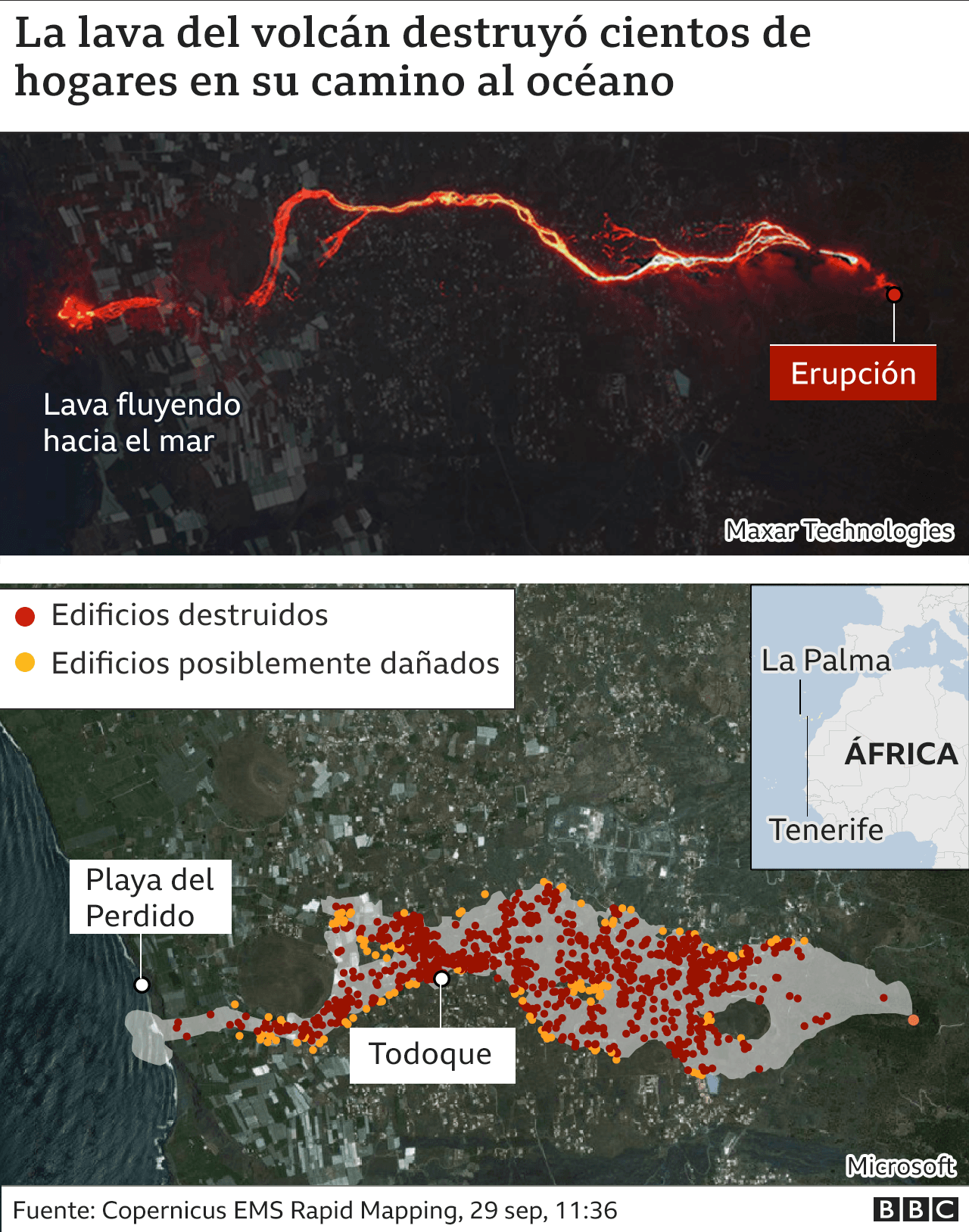
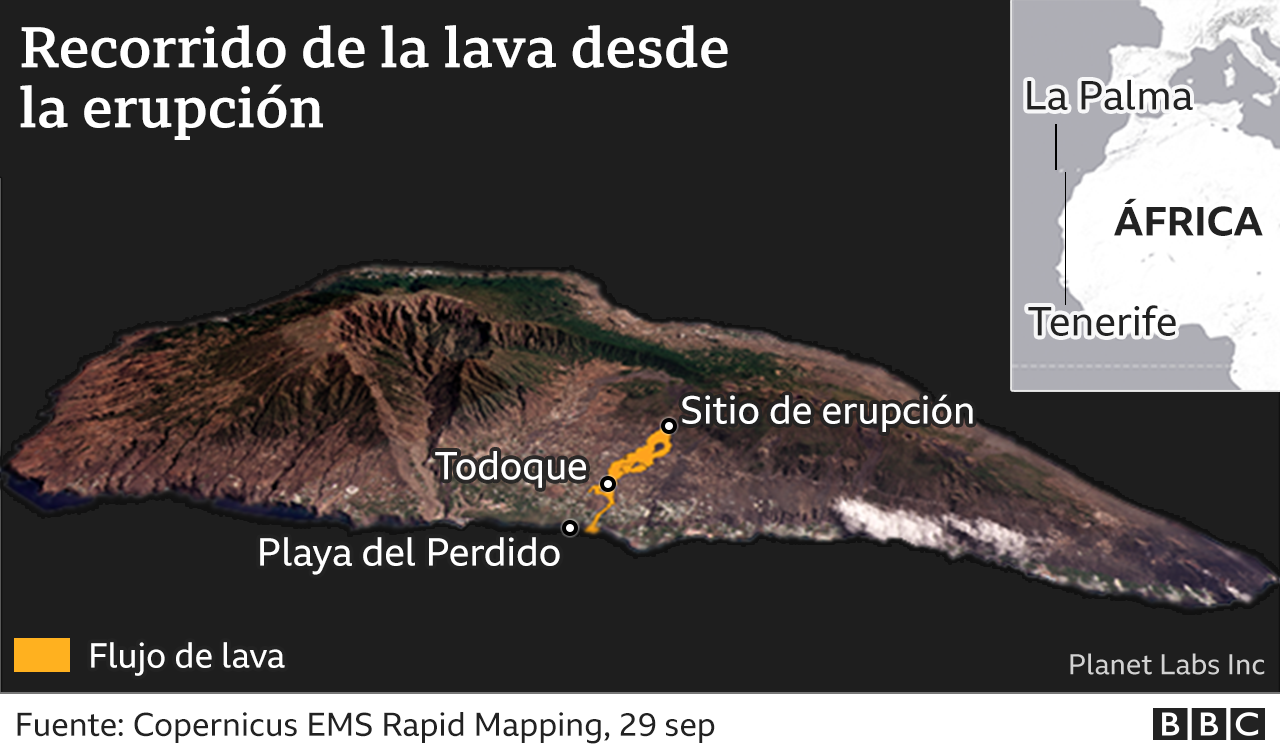
We also did not know if it would reach the sea. On Sunday the lava was 1,300 meters from the coastline, with a very powerful pouring that varied between 5 and 20 meters in height (more or less like a building between 2 to 7 floors) and a front of 600 meters long . Its speed was 100 meters per hour but it changes over time, as it depends on the slope of the terrain and the geoforms.
With this data, we expected it to reach the sea in thirteen hours (that is, Monday), but in the morning there was no longer liquid magma coming out, so the forecasts changed and it did not reach the sea until midnight on Tuesday.
In any case, it is irrelevant whether it reaches the sea or not in relation to its evolution. Although sadly its arrival may mean the end of the banana trees, buildings and infrastructures.
In this coastal area there are cliffs of several dozen meters and some beaches. Lava falls down the cliffs and lava cascades and coastal lava platforms form, as happened in other historical eruptions on this island. For example, in Teneguía in 1971, San Juan in 1949, El Charco in 1712, Fuencaliente in 1677 or Tahuya in 1585.
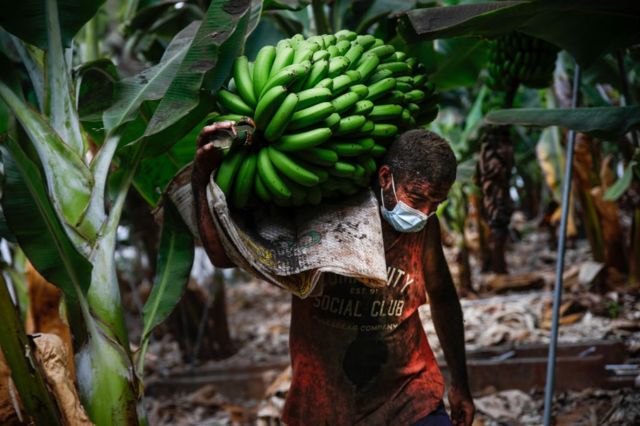
Where will the lava go?
What’s more, the path of the lava can change. Continuing again with the historical comparisons, the Teneguía eruption began with an eruptive mouth, as has happened now, with several small emission centers.
Then it concentrated on a volcanic cone, as in the new volcano. In the end, several conical buildings were formed with scattering pyroclasts and several lava flows that occupied a remarkable surface area. Thus the perimeter of the island increased at that point.
But that cone broke and the detached blocks went down the slope with the lava flow (erratic blocks). As the days went by, other fissures were created, more strombolian volcanic cones and several lava flows that lay on top of each other or that dispersed laterally, along with the pyroclastic deposits of fall in the surroundings.
This is what could happen in the next few days in the current eruption: new lavas will be formed, one on top of the other, or new lateral flows, but they will always seek to run from the areas of higher topographic elevation to the areas of lower height. Magmatic liquids move by gravity and following the topography of the land, looking for ravines or steeper areas.
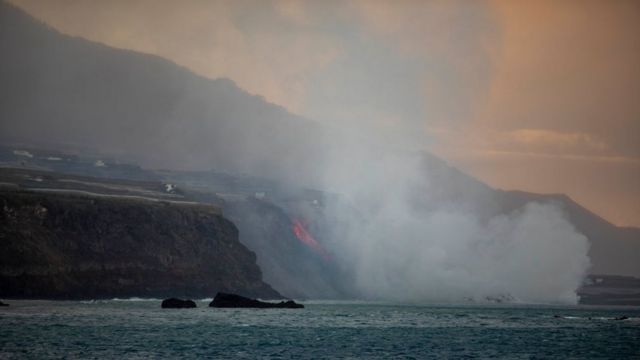
The future of the eruptions in the Canary Islands
The Canary Islands hot spot can have a diameter of about 250 kilometers. This distance encompasses the volcanic island buildings of El Hierro, La Palma and Tenerife. That is why there have been historical and recent eruptions that are concentrated in these three islands. But we cannot predict in which the next eruption will occur.
Going back to the eruptions that have occurred previously in these islands, we can estimate that as on average we experience an event like the current one every 35 or 40 years approximately. But being a statistic, nature does not always comply with it, as happened in the underwater eruption of El Hierro in 2011, only 10 years ago.
However, today we have seismographs on all the islands for seismic monitoring, along with geodesy studies, gravimetry, periodic measurements of temperature and subsoil gases, monitoring of different parameters by satellite, among others.
Thus, the prevention of eruptions in the Canary Islands with these measures is essential because being highly populated islands, there can be no risks to the population, goods and services.
When an eruption is approaching, earthquakes are one of the most important alerts. At the beginning of the seismic crises prior to the eruptions, there are hundreds of earthquakes daily, with intensities of less than three degrees.
At this moment, with this seismicity, we know that the gases and magma are already beginning to rise and press the oceanic crust and the insular volcanic edifice. Therefore, the magma wants to go outside.
When the magma is going to break the insular, subaerial or underwater surface, it usually does so with earthquakes of more than four degrees of intensity. Then one or more eruptive fissures are generated, with the exit of magma (gases, liquid and crystals) to the outside.
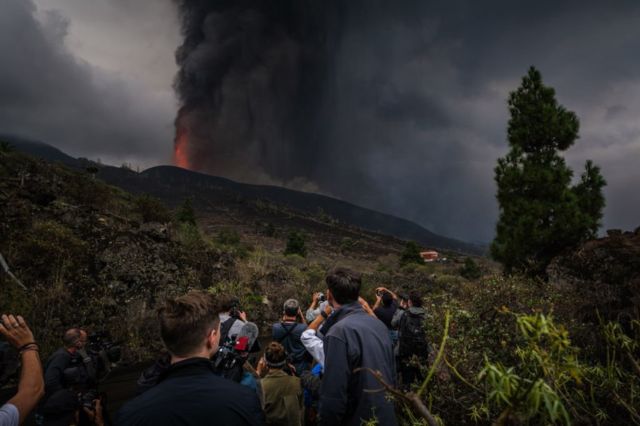
In the case of La Palma, we have felt during the weeks leading up to the eruption about 25.000 earthquakes, always below three degrees. Until one arrived on Sunday, September 19 with an intensity of 4.2 at 3:00 p.m. and a main eruptive fissure was formed with the emission of volcanic materials in the area of Cabeza de Vaca (about 600 meters high). This volcanic process is what we are seeing live and direct in the audiovisual media.
*José Mangas Viñuela is a professor and member of the Institute of Oceanography and Global Change (IOCAG), University of Las Palmas de Gran Canaria. His article was published in The Conversation whose original version you can read here.
eltiempolatino.com